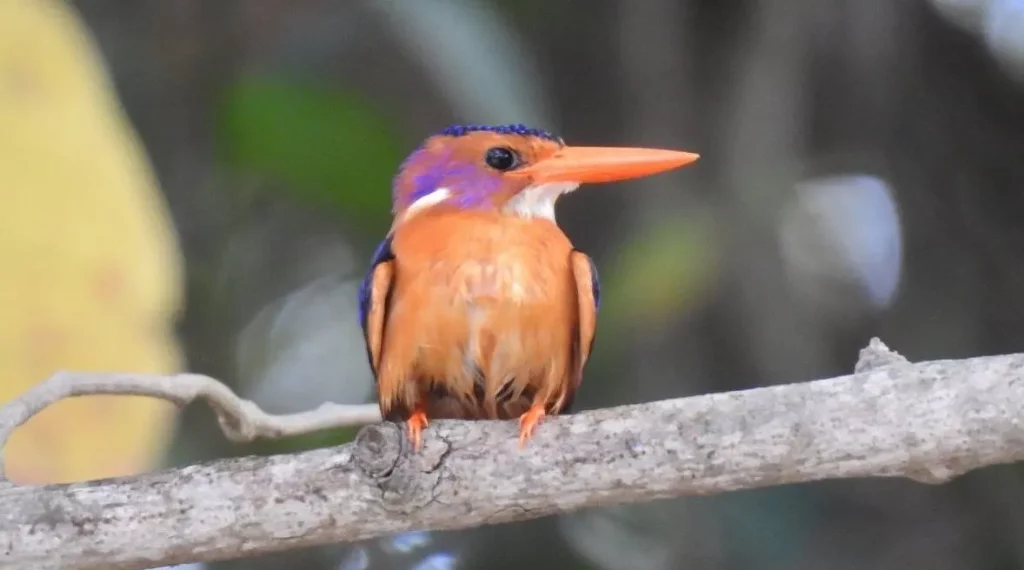The Pygmy Kingfisher is the smallest of The Kingfishers in The Gambia but one that has a special place in my heart. This tiny bird is one of our most frequent visitors. In the past, we have had birdwatchers come to Footsteps specifically to see her. As regular as clockwork she arrives around three pm and stays until after five pm every day. The same spot, in the Rosewood tree, locally known as Keno, she sits and dives and sits and dives.
Where is the bird found?
As mentioned earlier, this little bird is a daily visitor at Footsteps.
Outside of our lodge, The African Pygmy Kingfisher is found widely in Africa south of the Sahara, where it is a common resident and intra-African migrant. It is absent from much of the horn of Africa, and also the drier western regions of Southern Africa. Found in woodland, savanna, and coastal forest, it is not bound to water. They are usually found either singly or in pairs and is secretive and unobtrusive.
Angola, Benin, Burkina Faso, Burundi, Cameroon, Central African Republic, Chad, Republic of the Congo, Democratic Republic of the Congo, Ivory Coast, Ethiopia, Gabon, Ghana, Guinea, Guinea-Bissau, Kenya, Liberia, Mali, Mauritania, Niger, Nigeria, Rwanda, Senegal, Sierra Leone, Sudan, Tanzania, Togo, and Uganda. Its natural habitats are subtropical or tropical dry forests, subtropical or tropical moist lowland forests, and moist savanna. Source: Wikipedia
In Gambia for example this delightful bird is widespread and also generally fairly common in forest interiors.
What does it look like?
The African pygmy kingfisher is 12 cm (4.7 in) in length. The sexes are alike however the male bird weighs about 12 to 13 grams while the female weighs 1 to 2 grams less. The birds have a wingspan between 5 and 6 centimetres. It has a rufous underbelly and a blue back extending down to Its tail.
What does it feed on?
They feed mainly on insects such as grasshoppers, praying mantis, worms, crickets, dragonflies, cockroaches as well as moths and also spiders.
Want to know an interesting Factoid?
Amazingly, this beautiful little bird can feed not only geckos and lizards that are easily their length but also small frogs.
How does it sound?
While staying at Footsteps you will usually hear her in the late afternoon. Her song is a high-pitched insect-like “tsip-tsip” given in flight.


